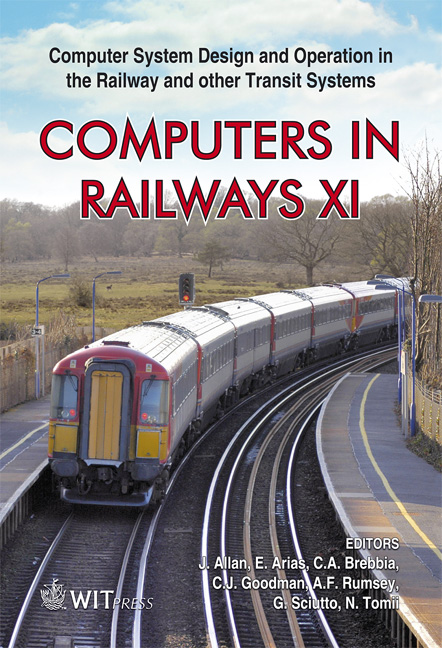Study On The Influence Of Track Conditions On Dynamic Wheel Load Variation
Price
Free (open access)
Transaction
Volume
103
Pages
10
Page Range
663 - 672
Published
2008
Size
545 kb
Paper DOI
10.2495/CR080641
Copyright
WIT Press
Author(s)
Y. Kawasaki, M. Miwa & A. Yoshimura
Abstract
This paper presents our achievements for the deeper understanding of the vehicle-track dynamic interactions. First we have developed \“TRADYS” (Track & Structural Dynamics Simulator), which is the testing instrument to excite a certain fixed point on the test track to produce the vehicle-track dynamic interaction similar to that actually produced by the passing trains on the commercial lines. We have also established the numerical simulation model of the vehicle-track dynamics of TRADYS. Through the combination of the above two experimental and theoretical approaches, we analyzed the influence of the track conditions on the wheel load variation. In this study, we took into account the four example track conditions for the test and the simulation, where the assumptions were as follows: (1) Standard track condition of Tokaido Shinkansen, (2) Instalment of less elastic rail pads instead of standard rail pads, (3) Instalment of resilient sleepers instead of standard sleepers (4) Both above replacements (2) and (3). The vehicle specifications of the Series 700 of Tokaido Shinkansen with the speed at 270km/h were chosen and used in this analysis. As a result, we obtained the following outcomes: (1) In the frequency ranges of up to 50 Hz, the replacement of both/either the rail pads and/or the sleepers resulted in no reductive influence on the wheel load variation. (2) On the other hand, in the frequency ranges of over 50 Hz, the replacement of both/either the rail pads and/or the sleepers contributed to the reduction of wheel load variation. (3) In the frequency ranges of over 50Hz, the lower track support spring led to the weaker transmissibility ratio of a track (irregularity) to wheel load variation. Keywords: wheel load variation, excitation test, computer simulation.
Keywords
wheel load variation, excitation test, computer simulation.





